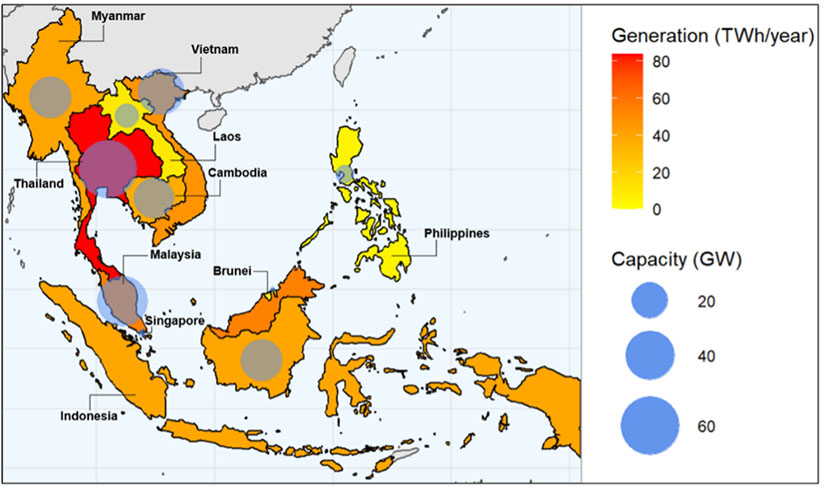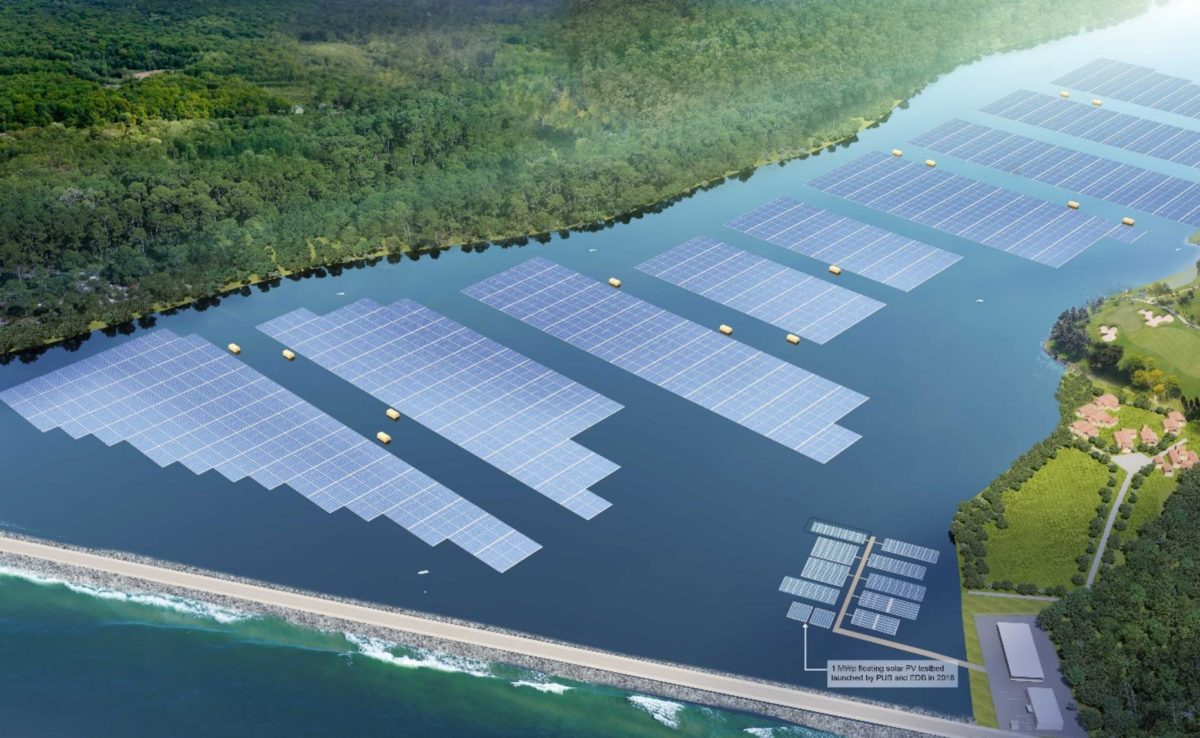Floating photovoltaics (FPV) is a form of renewable energy being evaluated worldwide as a potential solution to the land-use issue in electricity generation. For countries limited in land availability, like many island nations in Southeast Asia, FPV may represent a path forward to an emissions-free economy.
The U.S. National Renewable Energy Laboratory (NREL) partnered with the United States Agency for International Development (USAID) Regional Development Mission for Asia to evaluate the technical potential for FPV for the Association of Southeast Asian Nations (ASEAN). ASEAN has set a target of 35% renewable energy installed capacity by 2025.
The NREL report estimated technical potential for 10 ASEAN countries and is coupled with a data set available through a solar data explorer tool.
“FPV arrays are situated on water bodies such as lakes, reservoirs, or water treatment ponds, where they can be installed alone or in combination with hydropower dams,” said NREL.
NREL said FPV is particularly attractive in locations where hydropower infrastructure is planned or already in place and increased frequency or severity of drought may raise pose reliability concerns for hydropower production. Southeast Asia is particularly exposed to this hydropower underproduction risk as it has a strong network of established facilities.

“Additionally, much of the region is covered by rainforest ecosystems,” said Evan Rosenlieb, a geospatial data scientist at NREL. “Siting PV on water can be a way to increase renewable energy generation without deforestation.”
Southeast Asia is also a hotbed for the growing practice of aquaculture, or raising fish, crustaceans, and aquatic plants in a controlled water body. These sites are targeted as another potential match for floating PV.
“This emerging combination of aquaculture and photovoltaics, commonly referred to as AquaPV, can allow countries to co-locate energy and food production on existing natural or artificially created water bodies while minimizing the overall environmental impact of both sectors,” said Prateek Joshi, NREL energy engineer.
Joshi and the NREL team said aquaculture and solar may help boost food security in the region, offering dedicated, resilient energy production to critical food sources.
The data accompanying the report are publicly available as a resource for developers interested in learning more about the technical and economic potential of FPV in the region.
“This data will lead to more discussions and can inform decisions on the potential role of FPV in the region. It wouldn’t have been possible without all the existing work of previous FPV studies and previous RE Data Explorer tool development,” Sika Gadzanku, the NREL energy technology and policy researcher.
This content is protected by copyright and may not be reused. If you want to cooperate with us and would like to reuse some of our content, please contact: editors@pv-magazine.com.









By submitting this form you agree to pv magazine using your data for the purposes of publishing your comment.
Your personal data will only be disclosed or otherwise transmitted to third parties for the purposes of spam filtering or if this is necessary for technical maintenance of the website. Any other transfer to third parties will not take place unless this is justified on the basis of applicable data protection regulations or if pv magazine is legally obliged to do so.
You may revoke this consent at any time with effect for the future, in which case your personal data will be deleted immediately. Otherwise, your data will be deleted if pv magazine has processed your request or the purpose of data storage is fulfilled.
Further information on data privacy can be found in our Data Protection Policy.